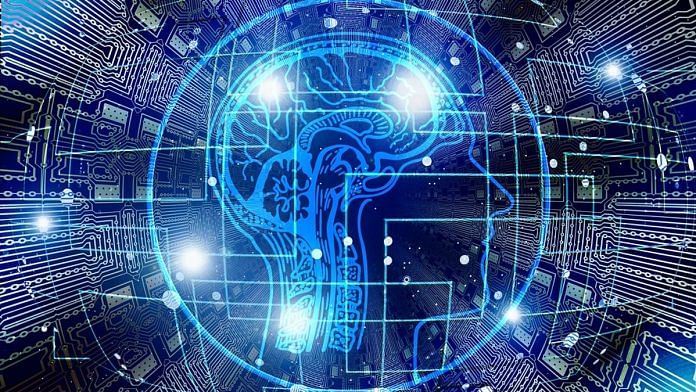In a time when unprecedented volumes of public funds are being distributed for COVID relief programmes, the efficiency of public services has never been more important. From fraud and error detection to the prediction of service disruptions, the variety of data held by government agencies means that they are well positioned to use artificial intelligence – which relies on good-quality data as a vital component for success – to address these problems.
Governments are just starting to explore the potential of AI to transform public services. It is crucial to design systems to capture the right data at the outset, so that AI can be deployed efficiently. This will all be made possible by tailoring systems to the subject matter at hand, with the help of policy-makers, public servants and data scientists, all working together to fully realize the benefits of this technology.
Governments are in a unique position of power, with access to a wide range of sensitive data. The use of AI in public services will need to operate within a robust ethical framework, supported by strong security and clear understanding of its place in decision hierarchies. Here are seven ways governments today are using AI to improve public services:
1. Reducing fraud and error in the tax and benefits systems
Governments today can benefit from the application of anomaly detection to benefits claims and tax rebates. The Department of Work and Pensions in the UK currently estimates £4.6 billion in overpayments and £2 billion in underpayments in the benefits system, while HMRC’s latest estimates of the tax gap stand at £31 billion. The application of machine learning to the vast data-holdings of these organizations to reduce these figures is underway, with much progress to be made in the coming years.
2. Detect grant fraud
Grant monies from the government are often issued with specific criteria for how the money is supposed to be spent. Detecting whether funds are being used as intended can be a challenge, due to the number of grants requiring review. Testing whether grant conditions are met often requires analysis of written reports, which are not always provided in a machine-readable format. To solve this problem, multiple machine learning methods can be applied to extract text, process it and classify it in order to determine a risk profile.
3. Find errors in public finance data
Government accounting systems generate large volumes of data, something driven by the size of the institution and its remit. This means that detecting issues in financial reporting can prove challenging. The use of time-series modelling to understand changes in regular expenditure profiles and debtors, combined with identification of rare transactions and analysis of fraud indicators, are only the starting point of the analytics that can help both finance departments and auditors.
4. Examine service delivery processes
Many public services are becoming digital, creating electronic footprints of the business processes in operation. The use of process mining, a technology which uses timestamps to identify workflows, can be used to understand the flows of citizens through public services. This can help understand where there are bottlenecks, where processes are going awry, and where digital services are failing. Combined with user feedback, process mining creates a fuller picture of the issues faced by users and indicates how to make the service more efficient.
Also read: European satellites could help catch the next climate change disaster
5. Automate public services
Public services have traditionally used resource-intensive call centres to manage access to help and support. This does not have to be the first line; the use of chatbots in the private centre to triage support requests has proven successful. There are many areas of central and local government that would benefit from citizens being able to access help without human intervention as the first port of call. For example, creating a chatbot to answer questions around a local government’s response to COVID-19 could help constituents, while also freeing up staff to work on more pressing issues.
6. Predict public health crises
Before the COVID-19 pandemic hit, there were already projects underway to predict when winter flu surges occurred. The use of predictive modelling is becoming increasingly important in the fight against epidemic diseases. During the COVID-19 pandemic, machine learning has been used in different ways to inform our understanding of the disease. For example, King’s College undertook clustering analysis to understand whether the myriad of COVID-19 symptoms formed specific sub-groups and what that meant for patient outcomes. This knowledge can be used to plan the use of medical staff, ICU beds and ventilators to save more lives.
7. Efficiently allocate resources
Resource allocation is paramount in delivering effective public services, whether it is the management of intensive-care beds or the maintenance of the road and rail network. The ability to predict need before it occurs allows managers to make better decisions; giving them this capability will become increasingly important in the public sector. The maintenance of roads is a particularly interesting case, as AI can use many millions of high-definition photos to analyze their condition, and to give local councils the intelligence they need to direct maintenance efforts, improving resource allocation and public safety simultaneously.
These are just some of the examples of how AI is beginning to impact public services. As governments seek to speed up the pace of implementation, we can look forward to increased benefits because of this approach. Governments that form a clear data strategy, complete with AI implementation guidelines and ethical framework, are well placed to realize these gains and increase public trust. In a time of scepticism towards government around the world, AI is an opportunity to redefine what public services can deliver.
This article was originally published in the World Economic Forum.
Rachel Kirkham is Director AI Solutions, MindBridge
Also read: Maybe 2020 wasn’t quite as horrible as it seemed






